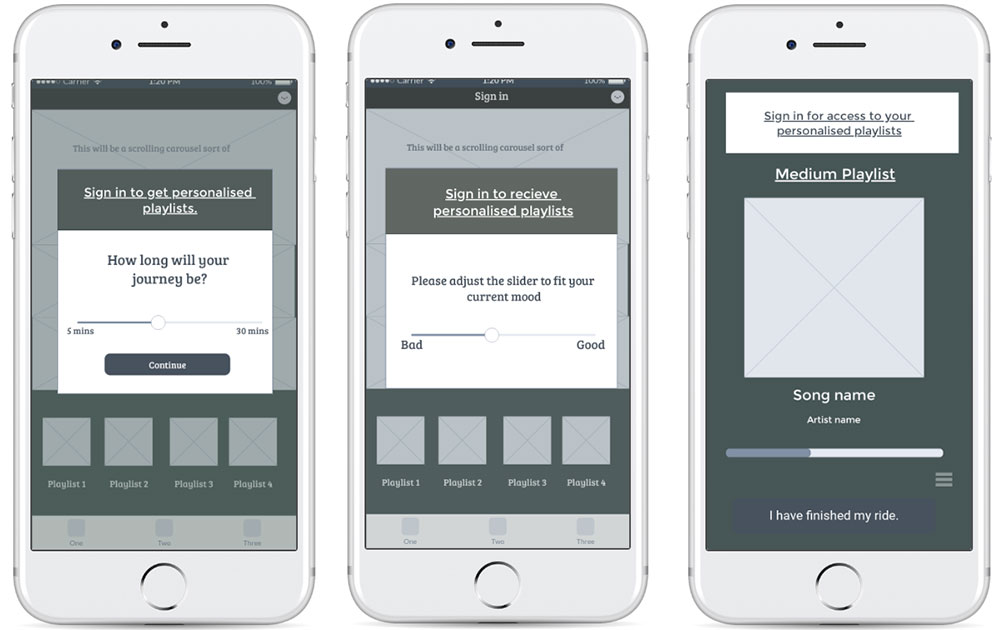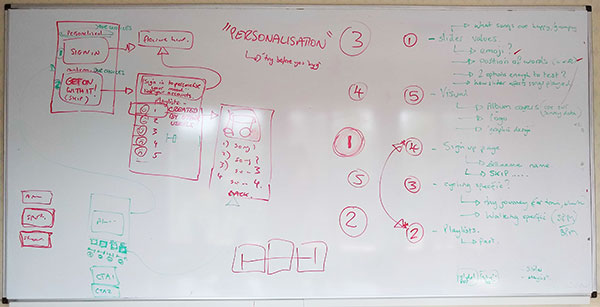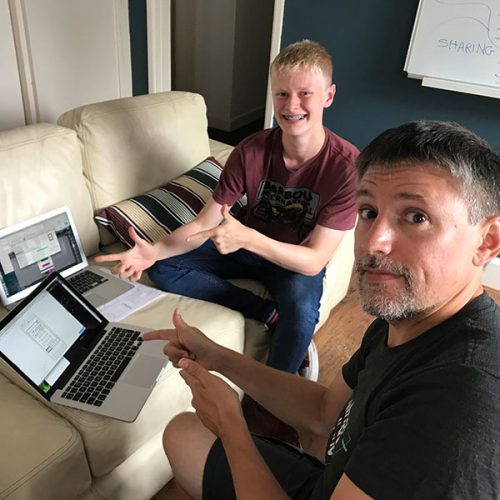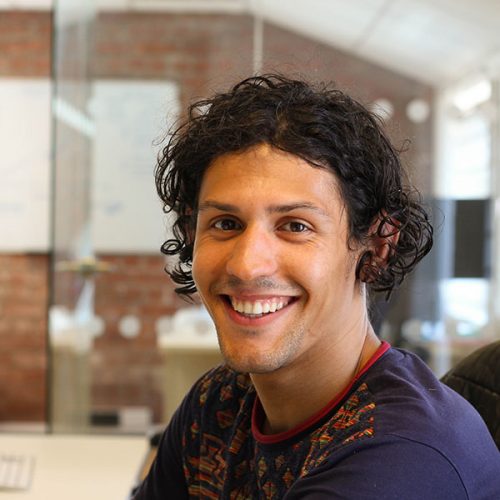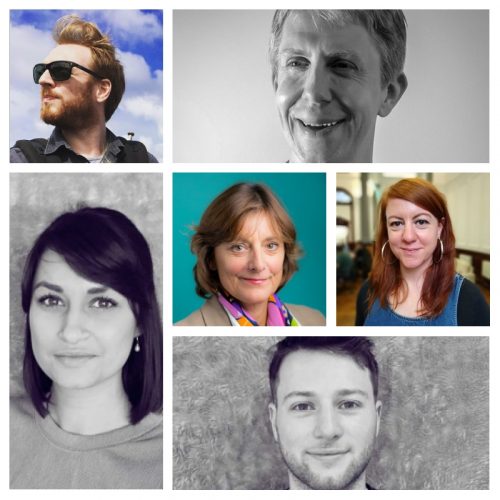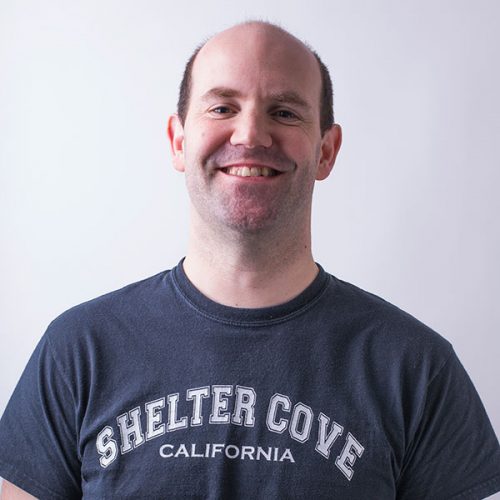Last month we welcomed year ten student Oscar to Simpleweb HQ for his summer week of work experience.
With just four days to introduce him to what it’s like working in the tech startup industry, we took a step away from the obvious tactic of showing him how to code and ran a programme we’ve been refining over the past couple of years.
Inspired by Jake Knapps’s Design Sprint, we adapted the ‘Sprint’ stages into a four day beginner-friendly introduction into the trials and tribulations of problem solving, idea validation, MVPs and prototyping.
Without this, code is often rendered useless, so it’s an important process for everyone to learn if they plan on building an app or starting a tech-based business.
It’s fair to say that Oscar was a natural and the ‘Sprint’ approach to his work experience week is definitely something we all enjoyed.
Day 1: Solving problems
Oscar’s task on day one was to think about the problems he faces in his day-to-day life. These helped him to form a selection of initial startup app ideas.
Scaling them down into problems and potential solutions, he went away to research existing technology.
Oscar had plenty of great ideas, from building a community for vintage action figure enthusiasts, to an app that matched music to your mood to increase your enjoyment when cycling to work or school. We also loved his idea for an app that helps people to speak more tactfully around tricky subjects and even a geocaching book hunt app for reading lovers.
Following Oscar’s brainstorming session, he summarised his ideas and we put them all to an audience of techies at Simpleweb HQ, asking them to vote on which one they’d like him to develop and why.
Day 2: User research
Votes came in on the morning of two with Oscar’s cycling music app a clear winner. Using some of the initial feedback from the team, he created a survey to test his assumptions.
He asked the team about their cycling habits, music taste and mood whilst cycling and found that only around 12% of people actually listened to music whilst out on their bikes.
Although this posed a slight issue in terms of the app reaching enough users, Oscar felt it was high enough that power users of the app could act as advocates, increasing awareness and use of the app from people that might not otherwise listen to music whilst cycling.
After analysing the results of the survey, Oscar went on to research other businesses and apps doing similar things. We wanted him to see what features were popular, what worked, what didn’t work and what was missing from existing sports and music apps.
In a world that’s saturated with small startups and duplicate ideas, focussing in on the unmet needs in an existing space (as opposed to trying to re-create features that already exist) is often the best way to start to grow your business or app – even when the market is big enough to take on another player.
Day 3: Solution sketching and wireframing
Drawing from the previous day’s research, Oscar began sketching out what his app might look like, how the user journey might go and how it might function using basic UX and UI principals.
Oscar sketched out his app on paper first and then began transferring it over to Marvelapp to build a clickable prototype the team could use to give him some feedback.
Day 4: User feedback and prototype iteration
After giving the team time to take a look at his clickable prototype and tell him what they liked and what they didn’t. We worked with Oscar to list out the key changes he would have to make to his app to ensure his target audience of cycling music lovers would give it a 10/10.
At this stage it’s so easy to add tonnes of features that will cost loads to build and might not end up being particularly useful. By balancing the user’s desires with time constraints and usability, startups can gain back some certainty over what to do next to develop their app or business.
This is something that would usually be done repeatedly in a feedback/ iteration loop. Yet, despite the short amount of time we had left, Oscar produced a functional app with all the basic features that would’ve been required to kick off user testing with an MVP.
You can check out Oscar’s final clickable prototype on Marvellapp.
Future Spark
We loved working with Oscar and were glad that he represented the next generation of entrepreneurs, designers and developers and their impressive knowledge and ideas that will fuel our collective future.
I learnt the thought processes and design stages behind creating an app and learnt why code is used where it is
Before he left Oscar told us: “This week I learnt the thought processes and design stages behind creating an app and learnt why code is used where it is. I have thoroughly enjoyed my time at Simpleweb and am sad to see it end.”
We’re sad to see it end too, but pleased to see how a process like Design Sprint can be used to show young people the other side of writing code.
Whether you’re a student or a seasoned entrepreneur, it’s amazing how a process so simple can be used to inspire ideas and potentially get a functioning business or startup off the ground.
If you’d like to discuss your startup or project, get in touch with Simpleweb today.

